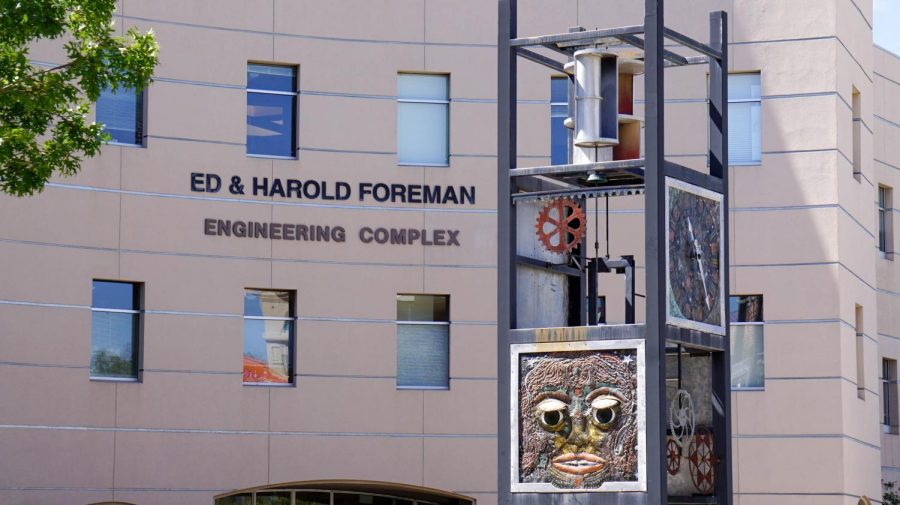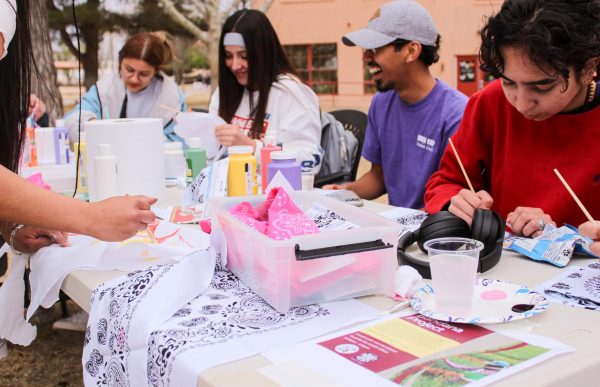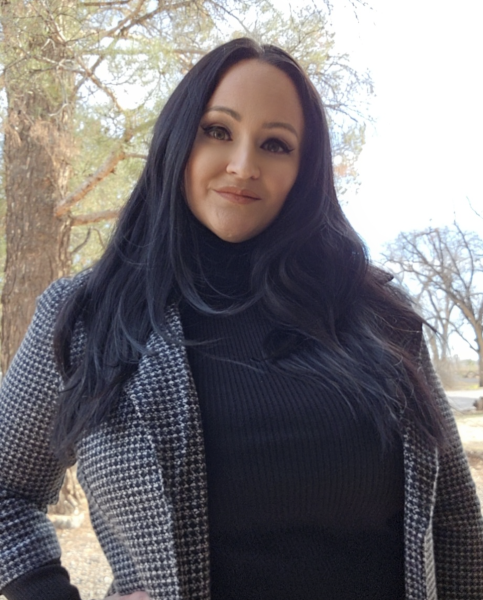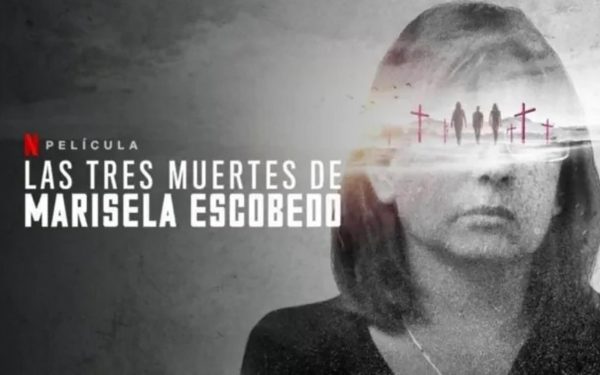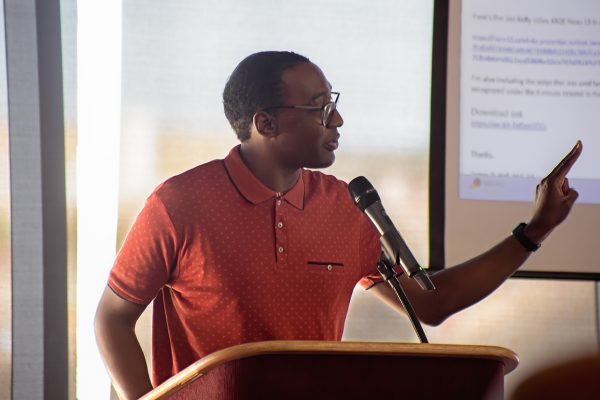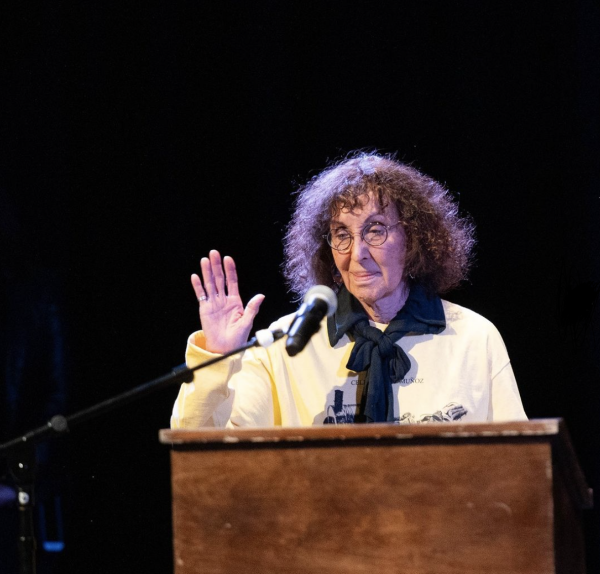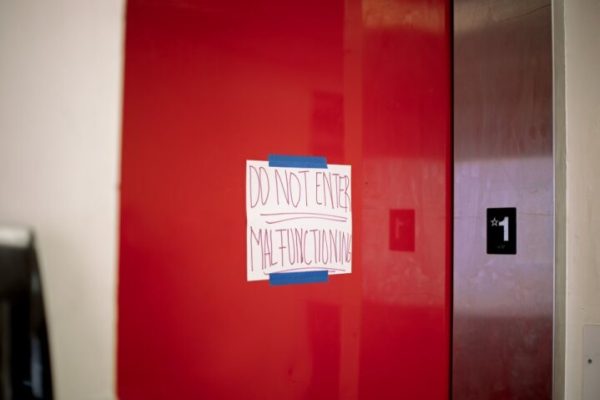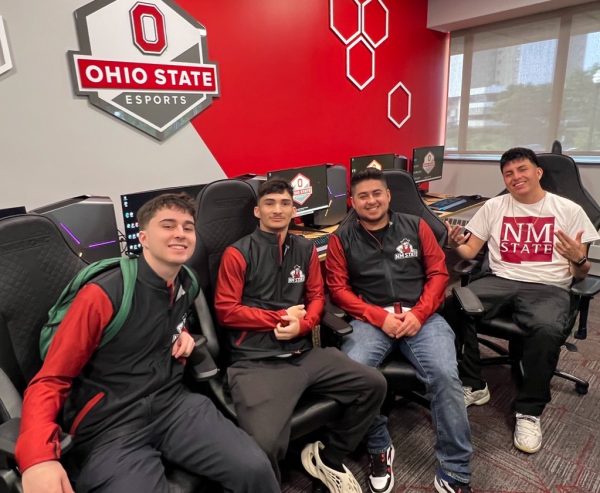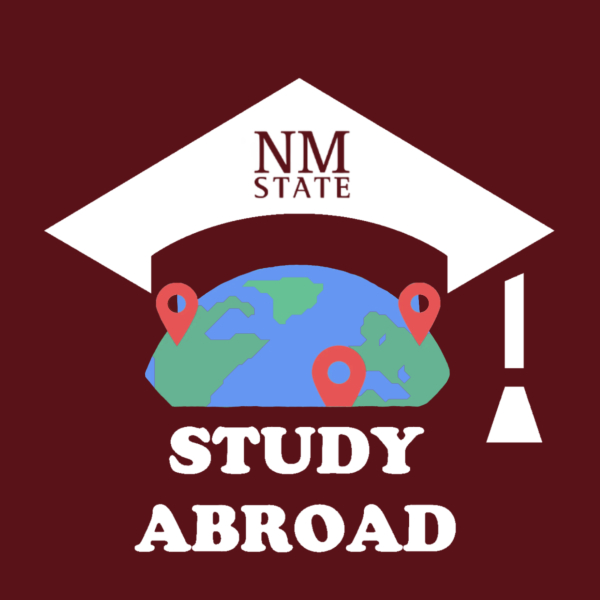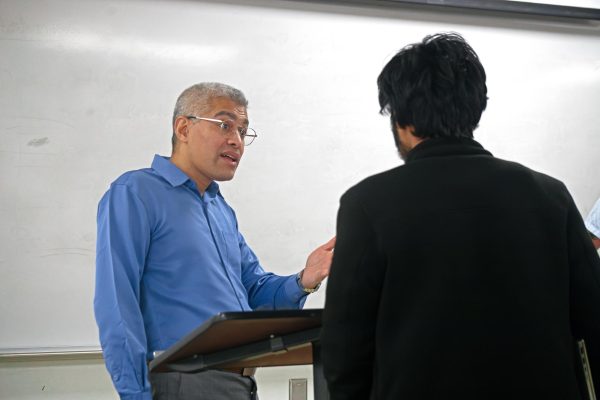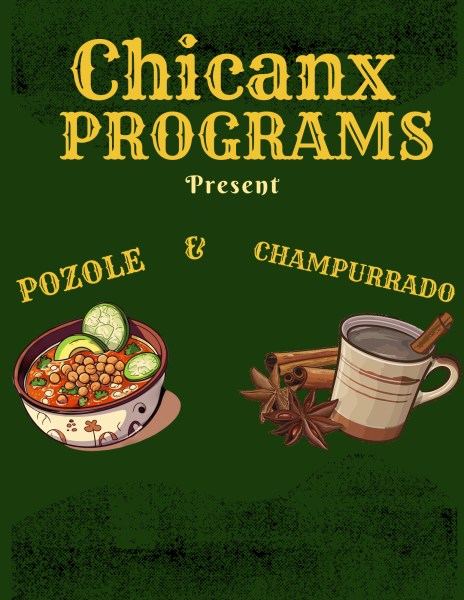NMSU Engineering embraces relationship with NASA
Ed and Harold Foreman Engineering Complex at the NMSU main campus.
Throughout the 130 years NMSU has been established, the university has endeavored to make relationships with prominent administrations such as the National Aeronautics Space Administration, that help the students of the university to succeed in their academic career. New Mexico State’s engineering department has created an exclusive relationship with NASA, who provides assistance to research projects NMSU students and faculty are working on.
In 2006, NMSU expanded the College of Engineering by offering an aerospace engineering program to its students, making it the only space program in New Mexico and throughout West Texas. The current enrollment for the fall of 2018 for this program is about 282 students, all who are hard at work attempting to innovate ways that will help to maintain and expand the functions of our aerodynamic systems and structures.
NASA has contributed to the education of the engineering students at New Mexico State by acting as a space grant sponsor and providing facilities at NMSU for students to utilize to enhance their studying.
In 1989, the U.S. Congress created the National Space Grant College and Fellowship Program. It is funded by NASA and is currently part of their Science Technology Engineering and Math Engagement Programs. The New Mexico Space Grant Consortium (NMSGC) is also subsidized by NASA and this grant is what has allowed students to further their education and research.
Paulo Oemig, Ph.D., director with NMSGC & NASA Established Program to Stimulate Competitive Research said the objectives of National Space Grant College and Fellowship Program are to prepare and recruit U.S. citizens for careers in space and related fields
“The objectives of the National Space Grant College and Fellowship Program are: To establish and maintain a national network of universities with interests and capabilities in aeronautics, space and related fields. To encourage cooperative programs among universities, aerospace industry and federal, state and local governments. To encourage interdisciplinary training, research and public service programs related to aerospace. To recruit and train U.S. citizens, especially women, underrepresented minorities, and persons with disabilities, for careers in aerospace science and technology,” Oemig said.
Jose Rodriguez, an undergraduate engineering student, said working with NASA has opened his eyes to the world of engineering
“I wouldn’t be where I am today, I probably wouldn’t even be a chemical engineer if it wasn’t for the research group or for the NASA grant who has shown me this new world,” undergraduate Jose Rodriguez said. “Using NASA when I’m doing my research opened my eyes to different fields and how engineering works.”
Catherine Brewer, Ph.D., who came to the Chemical Engineering department in 2013, has worked on two key projects while at NMSU. Brewer’s emphasis study is Biological Mass Conversion, which she applied to a targeted advancement project in 2015 when attempting to discover how there could be a reduction of waste on spacecraft with her students.
“We were looking to turn the waste of spacecraft into heat, into energy and, most importantly, into a material that can be used to grow plants on space missions,” Brewer said.
This project lasted for about a year and a half. During that time, Brewer and her students were able to take samples of their work to Kennedy Space Center for testing.
“The space grant has helped me attend conferences, it provided an undergraduate scholarship to work on the spacecraft waste project,” Brewer said. “We’ve taken advantage of that space grant program when we see the opportunity.”
Brewer also assisted Rodriguez and, then graduate student, Jere Freeh with developing an analytical technique that was applied to the system of working activated carbons out of local woody waste materials, including pecan shells and forestry waste.
“Different components went into their research project, all in attempt to answer the overall question of, ‘Can we make an activated carbon system in a less expensive way the White Sands Test Facility is currently doing?’” Brewer said.
The project will officially come to an end in 2019, however, they are working to have it extended to 2020 so graduate students can finish their thesis on it.
“The relationship with NASA has opened up a lot of opportunities for students to meet with researchers they wouldn’t otherwise have gotten to work with,” Brewer said. “The things we do here for research are applicable in a broader world. Many of our students have a limited view of what they can do, and I think this project has helped expand that.”
“I come from a very poor family that’s never had the luxury to travel,” said Rodriguez. “NASA has given me that opportunity.”
Rodriguez presented the final results at the National Aeronautics and Space Administration Technology Evaluation, Environmental, Risk Mitigation conference in 2016 in California and 2017 in the Netherlands at the European Space Agency Test Facility.
Brewer said NMSU also works well with White Sands Test Facility.
“NMSU works so well with White Sands Test Facility because of proximity and their existing relationships with some of the researchers there, including David Amidei,” Brewer said.
David Amidei has been able to help facilitate some of the grant work. Throughout Amidei’s 32-year career with NASA, he has acted as the environmental manager of White Sands Test Facility. His more current position was when he was stationed in Washington D.C. overseeing a remediation effort from a headquarters perspective.
In the late 90’s, Amidei was working on his Ph.D. at NMSU when he was asked by NASA to work with them. However, now that he is recently retired from NASA, Amidei is now back at NMSU, finishing up his Ph.D. program working with Brewer and her students to continue these projects.
“It’s an opportunity using local sources to solve a local problem”, stated Amidei. “Being able to take these students to international conferences has created an exposure that has bridged that gap culturally. They are meeting professionals in this line of work and potential future colleagues.”
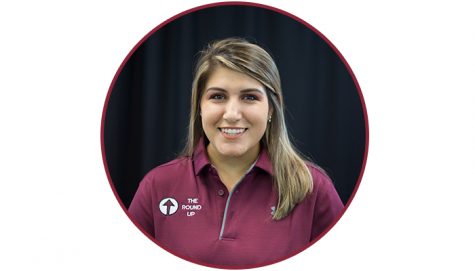
Krysta Quinonez is a Las Cruces local who is entering her senior year at New Mexico State University. She is a graduate from Las Cruces High School where...


